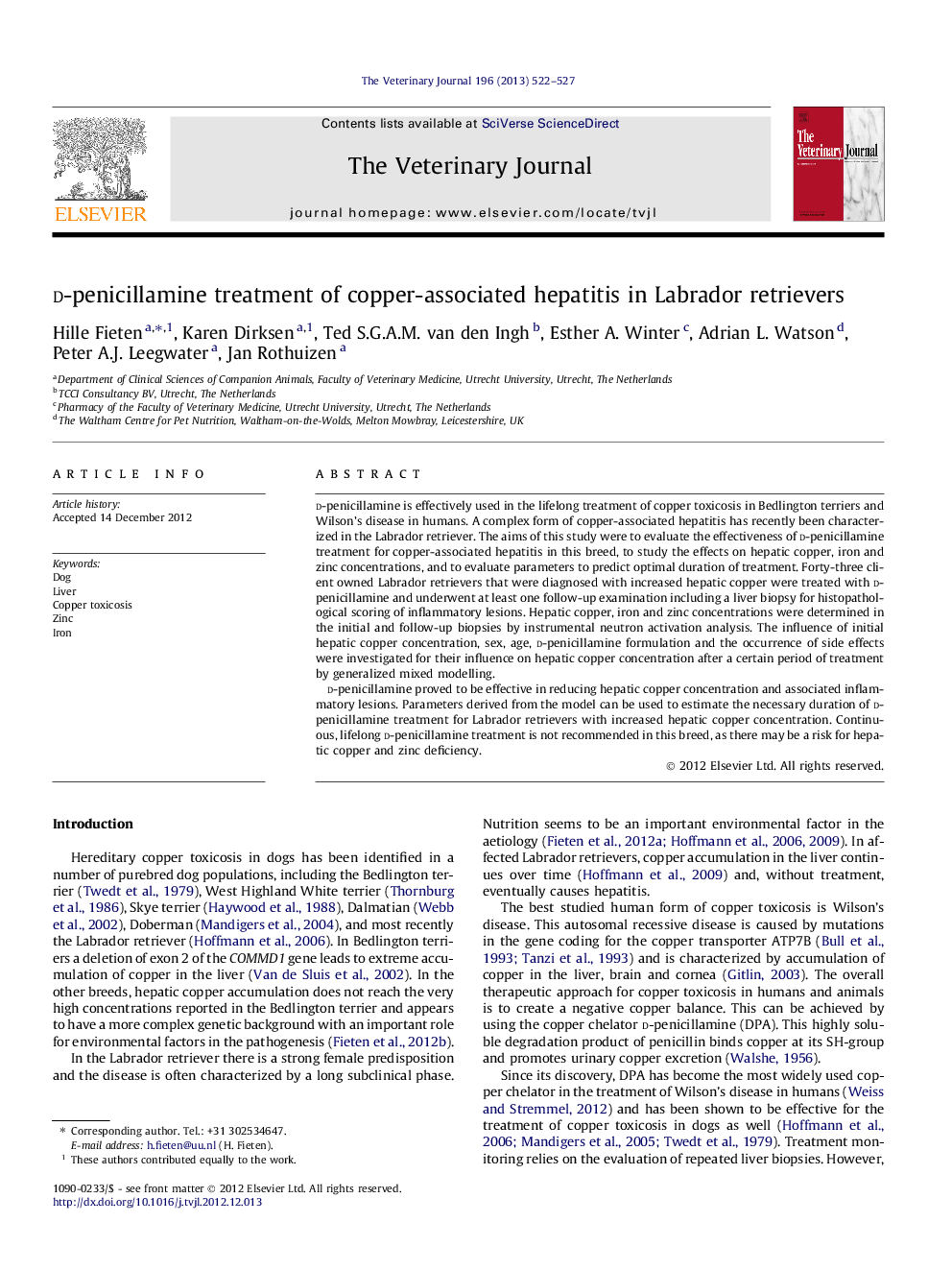| کد مقاله | کد نشریه | سال انتشار | مقاله انگلیسی | نسخه تمام متن |
|---|---|---|---|---|
| 5798748 | 1111780 | 2013 | 6 صفحه PDF | دانلود رایگان |
d-penicillamine is effectively used in the lifelong treatment of copper toxicosis in Bedlington terriers and Wilson's disease in humans. A complex form of copper-associated hepatitis has recently been characterized in the Labrador retriever. The aims of this study were to evaluate the effectiveness of d-penicillamine treatment for copper-associated hepatitis in this breed, to study the effects on hepatic copper, iron and zinc concentrations, and to evaluate parameters to predict optimal duration of treatment. Forty-three client owned Labrador retrievers that were diagnosed with increased hepatic copper were treated with d-penicillamine and underwent at least one follow-up examination including a liver biopsy for histopathological scoring of inflammatory lesions. Hepatic copper, iron and zinc concentrations were determined in the initial and follow-up biopsies by instrumental neutron activation analysis. The influence of initial hepatic copper concentration, sex, age, d-penicillamine formulation and the occurrence of side effects were investigated for their influence on hepatic copper concentration after a certain period of treatment by generalized mixed modelling.d-penicillamine proved to be effective in reducing hepatic copper concentration and associated inflammatory lesions. Parameters derived from the model can be used to estimate the necessary duration of d-penicillamine treatment for Labrador retrievers with increased hepatic copper concentration. Continuous, lifelong d-penicillamine treatment is not recommended in this breed, as there may be a risk for hepatic copper and zinc deficiency.
Journal: The Veterinary Journal - Volume 196, Issue 3, June 2013, Pages 522-527
